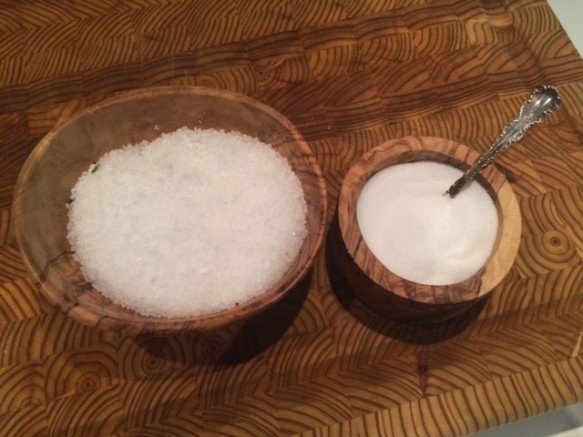
How to Salt (and Not Pepper)
Ever notice how much better food from a restaurant can taste, compared to your own home cooking? And I'm talking in comparison to the amateur who actually knows how to follow a recipe. The reason for your cooking missing that certain WOW factor may be simpler than you think.
It’s (often) all about the salt. When done right, salt doesn’t make food taste salty but rather an ampted up version of the food itself. Meat is meatier and vegetables are supercharged. And yes, it’s also important in desserts. Especially those made of chocolate.
Trust me when I say the chef at your favourite hot spot is using more, so much more salt then you are at home.
So, what kind to use? Start by sprinkling that table salt on the driveway, because that’s where it belongs. It’s far more sodium dense than kosher or sea salt (plus it tastes like metal) and the crystals are so fine, it’s hard to see where it’s going. And in this day in age, there are infinitely more and interesting options. Keep a supply of sea and kosher for seasoning during cooking, then experiment with other salt flavours like maldon, himalayan and fleur de sel for finishing dishes (for flavour as well as texture). And any of these fancy salts makes a fantastic gift for someone who cooks, FYI.
Then the big question is, of course, how much. How to strike that balance of just enough without going too far. This is where the skill comes in. But really it’s more like practise, because this isn’t rocket science. The key is to salt and taste along the way, using two-finger sprinklings. When making soup, for example, salt the onions when they’re sweating. Then salt and taste again when you add vegetables and again when you add stock. If you only salt at the end, your dish is will taste bland, with salt on top. Invest in a couple of small salt bowls and keep them next to the stove for easy access.
When blanching vegetables or boiling pasta, always salt the water. And salt generously! As in, up to a 1/4 cup per 4 quarts of water. When sautéing vegetables, start with a healthy pinch and go from there. With meat and chicken, be aggressive. Honestly, I have never tasted a steak with too much salt.
You may have noticed professional chefs salting from high above a pot. The reason is that it allows for even salting, so it’s a worthwhile technique to develop for your own cooking. Plus you’ll look like you know what you’re doing in front of your friends.
If you’re really unsure of yourself keep a raw potato on hand. If you overdo it, grate some potato into the pot and let it stew for a few minutes before removing. The starch will have absorbed some excess salt. Unsalted butter works too, but Julia Child’s potato trick doesn’t add calories.
Next to salt, another flavouring we home cooks often miss is acidity. I’ve learned that a squeeze of lemon on just about anything, right before serving, cuts through sweetness and richness and acts as a flavour booster and balancer.
And then there’s pepper. Why just about every recipe in the world calls for “salt and pepper” is a mystery to me. Pepper is so sharp and distinct, it doesn’t have a place in every dish. If pepper is the main event, like pepper and parmesan linguini, then great. But it doesn’t enhance the way salt does and adds a whole new overbearing flavour. I use mine about as often as I use saffron. Which is hardly ever.












